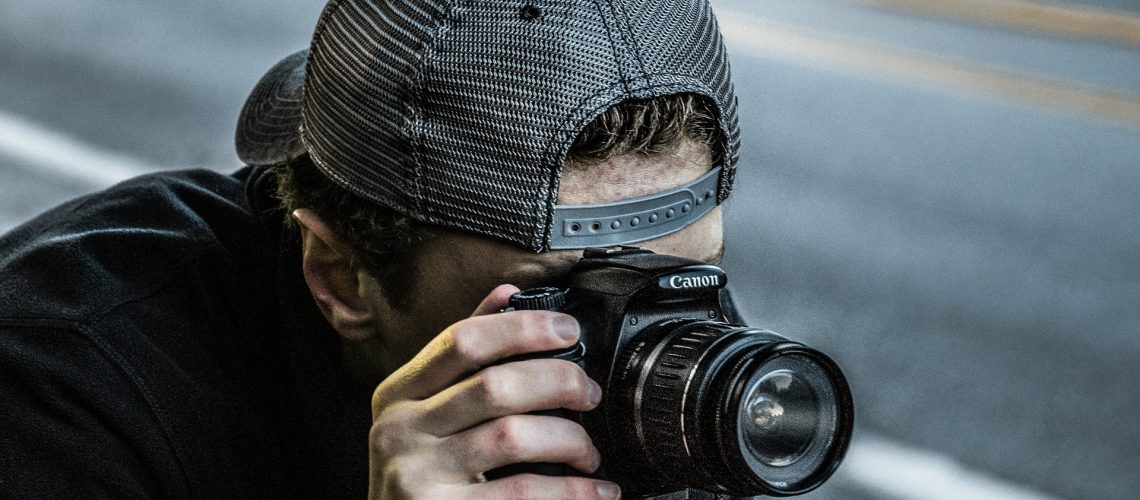What Is the Best Way to Enhance Video Quality?
You often hear from small business owners who recognize the importance of high resolution, quality videos for promoting their businesses. Many entrepreneurs decide to purchase a camera and try their hand at shooting videos themselves, only to feel discouraged by the steep learning curve, expensive equipment, and uncertainty about storytelling. While it’s advisable to hire professionals like Gravity Pictures for top-notch video production, we understand that some situations call for in-house solutions. Here’s a helpful resource for those seeking to learn about the importance of the quality of a video. If you want to learn how to improve video quality, let’s cover tips on stabilization, camera settings, and audio capture. Say no more to low quality videos!
How to Enhance Video Quality
Stabilization
Create professional looking videos by investing in a tripod or handheld gimbal to eliminate shaky footage and ensure steady shots. A tripod is a three-legged stand that supports your camera and keeps it steady during filming. It provides stability and allows you to capture smooth, fluid shots without the distraction of camera shake. Tripods come in various sizes and styles, including lightweight travel tripods, versatile tabletop tripods, and heavy-duty professional tripods designed for larger cameras and equipment.
Handheld gimbals are portable stabilizers designed to keep your camera steady while shooting handheld footage. They use gyroscopic technology to counteract movement and stabilize the camera in real-time, resulting in smooth and steady shots even when moving. Handheld gimbals stabilize your camera in all three axes, allowing you to capture smooth and fluid motion while walking, running, or panning. They are ideal for filmmakers, vloggers, and content creators looking to elevate their video production quality.
Camera Settings
Understanding your DSLR camera settings is crucial for capturing high-quality video. Adjust settings such as aperture, shutter speed, and ISO to optimize exposure and achieve the desired look for your video.
Aperture refers to the opening in the lens through which light passes. It controls the depth of field in your video, determining how much of the scene is in focus. A wider aperture (lower f-stop number) creates a shallow depth of field, blurring the background and emphasizing the subject. Conversely, a narrower aperture (higher f-stop number) increases the depth of field, keeping more of the scene in focus.
Shutter speed determines the amount of time the camera’s shutter remains open, exposing the camera sensor to light. It affects motion blur in your video. A faster shutter speed freezes motion and reduces blur, ideal for capturing fast-moving subjects or maintaining sharpness in handheld shots. Conversely, a slower shutter speed introduces motion blur, creating a smoother and more cinematic look, especially in scenes with slow movement or low light conditions.
ISO measures the sensitivity of the camera sensor to light. Increasing the ISO allows you to capture brighter images in low light conditions, but it also introduces digital noise and reduces image quality. Conversely, lowering the ISO reduces noise but requires more light to properly expose the image. It’s essential to find the right balance between ISO, aperture, and shutter speed to achieve optimal exposure without sacrificing image quality.
Camera Setting Tips
Use a wide aperture (lower f-stop) for cinematic shallow depth of field effects, particularly in portrait shots or close-ups.
Adjust shutter speed based on the desired level of motion blur and the speed of movement in your scene.
Keep ISO as low as possible to minimize digital noise while ensuring adequate exposure.
Utilize manual mode for full control over your camera settings, allowing you to adjust exposure settings according to specific lighting conditions and creative preferences.
Experiment with different combinations of aperture, shutter speed, and ISO to achieve the desired visual style and mood for your video.
Audio Capture
Good audio quality is just as important as video quality. Improve quality by investing in a quality microphone and learn proper audio recording techniques to capture clear and crisp sound. The microphone is perhaps the most critical component of your audio setup. Consider investing in a high-quality microphone that suits your specific recording needs. There are various types of microphones available, including shotgun microphones for directional recording, lavalier microphones for hands-free operation, and condenser microphones for studio-quality sound. Choose a microphone that best fits your recording environment and intended use.
While many DSLR cameras come equipped with built-in microphones, they often fail to capture high-quality audio, especially in noisy environments or outdoor settings. Investing in an external audio recorder allows you to capture superior audio separately from your camera, providing more flexibility and control over the recording process. Look for audio recorders with features such as adjustable gain, built-in microphones, and XLR inputs for connecting external microphones.
Monitoring audio levels during recording is essential to prevent clipping (distortion) or recording levels that are too low, resulting in low quality audio. Use headphones to monitor audio in real-time and adjust recording levels accordingly to ensure optimal sound quality.
In addition to capturing high-quality audio during recording, post-production editing can further enhance the clarity and quality of your audio. Use audio editing software to remove background noise, adjust levels, and apply equalization (EQ) to enhance clarity and balance in your recordings.
What is a Video Quality Enhancer?
A video quality enhancer is a tool or software designed to improve video quality. It may include features such as noise reduction, color correction, and sharpening to enhance the visual appeal of the video. One of the common challenges in video production is the presence of unwanted noise, such as background hum, hiss, or electronic interference. Video quality enhancers employ advanced algorithms to effectively reduce or eliminate noise from the audio and video tracks, resulting in cleaner and more polished recordings.
Color plays a significant role in conveying mood, atmosphere, and emotion in video content. Video quality enhancers provide color grading tools that allow color adjustments to adjust color balance, saturation, contrast, and brightness levels to achieve the desired look and feel. From correcting white balance issues to creating vibrant and cinematic color grades, color correction tools empower content creators to enhance the visual aesthetics of their videos.
Sharpness is essential for maintaining clarity and detail in video footage, particularly in high-resolution formats. Video quality enhancers offer sharpening tools that enable you to enhance the overall sharpness and crispness of their video content, resulting in sharper and more defined images.
Handheld or shaky footage can detract from the overall quality and professionalism of a video. Video quality enhancers feature stabilization algorithms that analyze motion patterns in the footage and apply corrective measures to stabilize shaky footage, resulting in smoother and more visually pleasing video sequences. In some cases, video quality enhancers offer tools for enhancing the resolution and clarity of video footage. To enhance video quality, consider optimizing frame rate, as it plays a crucial role in delivering smoother motion and overall viewer satisfaction. Through advanced upscaling techniques, these tools can increase the resolution of lower-quality footage, allowing you to achieve sharper and more detailed images.
Some video quality enhancers come equipped with a variety of special effects, filters, and creative tools that allow you to add artistic flair and visual interest to their videos. Visual effects, such as slow motion effects, serve as powerful storytelling tools in video production, adding depth, emotion, and emphasis to key moments within a video. Don’t pay for a low quality video enhancer.
FAQs about Video Quality Enhancers
Adobe Premiere Pro is a professional-grade video editor software widely used by filmmakers, videographers, and content creators for improving video quality. It offers a comprehensive set of editing tools, advanced effects, and seamless integration with other Adobe Creative Cloud applications and is the best video quality enhancer.
Video quality enhancers enhance visual appeal by employing features such as noise reduction, color correction, sharpening, stabilization, and resolution enhancement, ultimately refining the overall quality and professionalism of video content.

